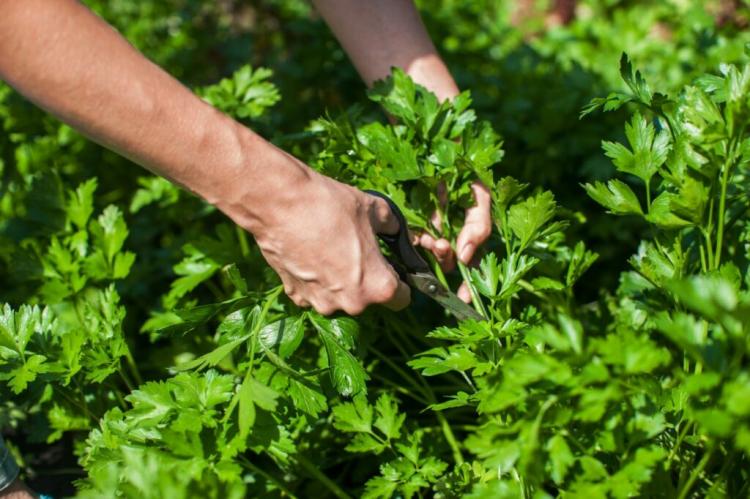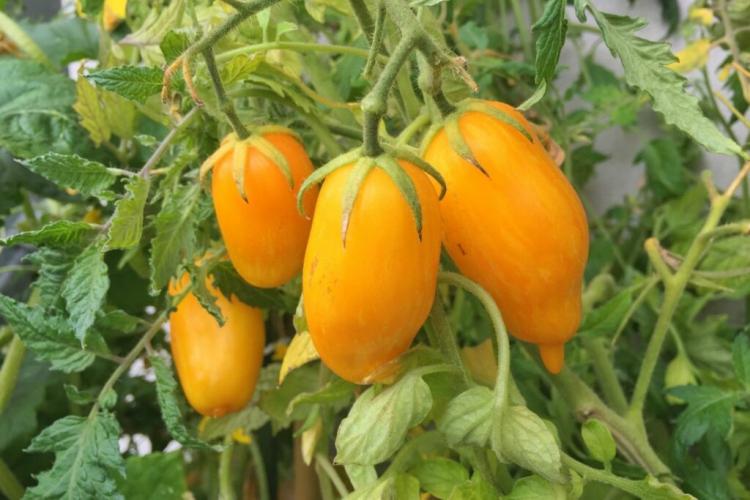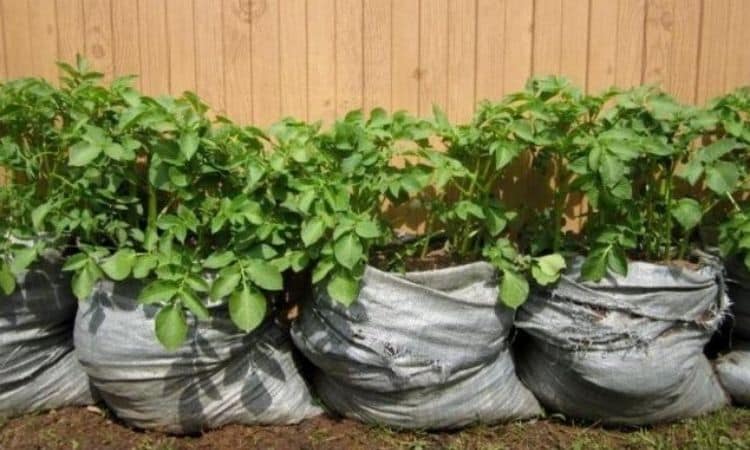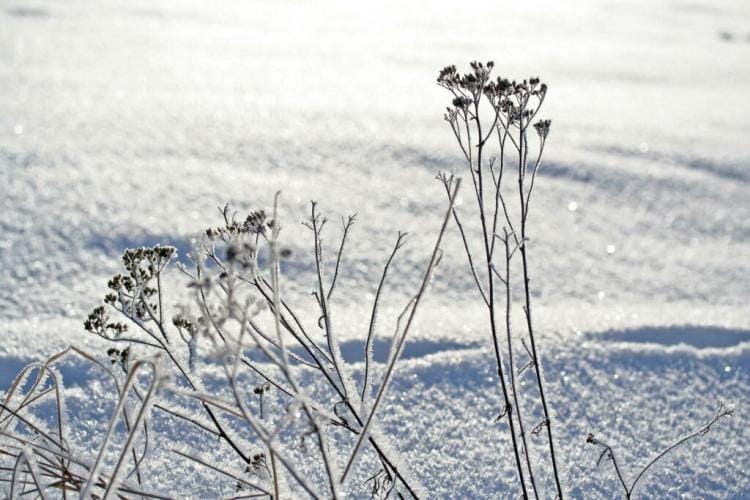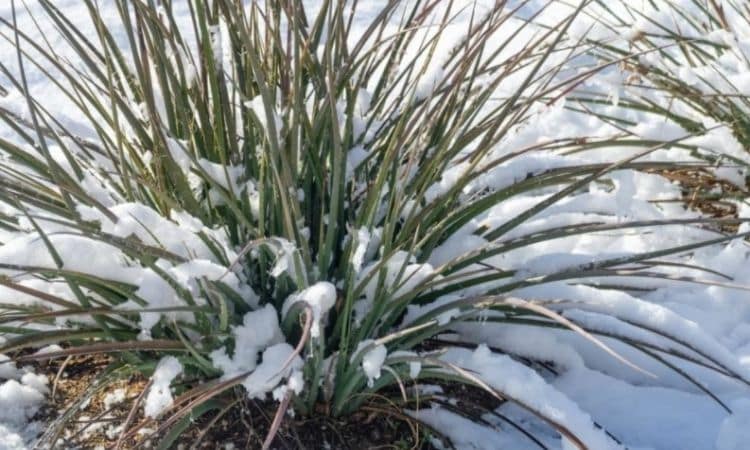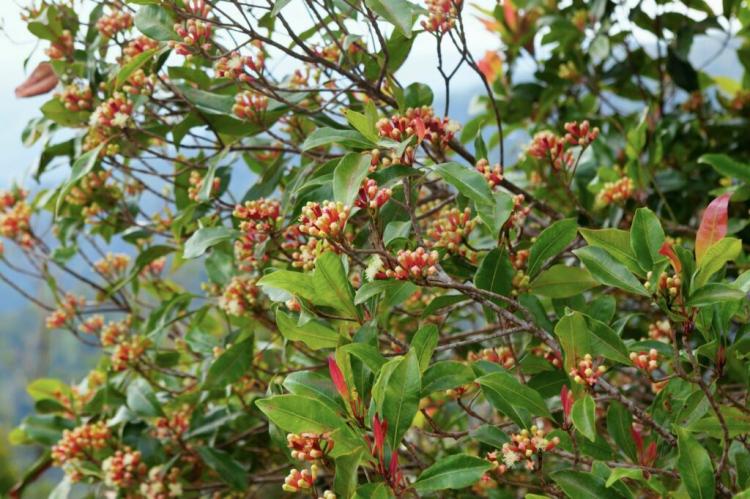Caring for parsley: cutting, fertilizing and watering
It grows in almost every garden, but there are a few things to consider when caring for parsley. How to cut, water, and fertilize parsley properly.
Parsley (Petroselinum crispum ), which comes from the Mediterranean region, has been a common medicinal and aromatic plant since the Middle Ages. In this article, you will find out what to consider after sowing and planting parsley in the care of the Umbelliferae (Apiaceae).
Caring for parsley: cut the parsley
Table of Contents
Basically, the parsley can always be harvested. When cutting the parsley, only the individual leaf and stalk must be cut off with scissors or a knife. The heart of the parsley plant must not be damaged or cut, otherwise, the plant cannot reproduce new leaves. When cutting, make sure not to cut off too many leaves of the parsley so that the herb can recover from the cut and carry out sufficient photosynthesis. The right cutting of the parsley is therefore not rocket science. This is how you get your renewable, fresh supply of spicy leaves.
Pour parsley
You should water your parsley regularly during the main growing season, i.e. from sowing in spring to flowering next year. Parsley needs a lot of water, especially when compared to other Mediterranean herbs. She prefers moist soil and less direct sunlight. Especially as a young plant after germination and in midsummer it quickly suffers from a lack of water. However, when pouring parsley into the pot, it is important to ensure that waterlogging is avoided. How often to water parsley depends on the temperatures. However, the soil in the pot or bed should never dry out completely, because the green herb is hard to handle.
You may be interested in Types of Parsley
Fertilize parsley
When fertilizing parsley, it comes down to choosing the right fertilizer. It needs medium nitrogen and potassium contents, with little phosphorus. In no case should the parsley be fertilized with fresh manure? This contains high levels of nitrogen and phosphorus and is therefore too hot. The parsley loses its aroma significantly and the growth of the parsley can be severely restricted by the hot, fresh organic fertilizer.
Mineral nitrogen fertilizers such as blue grain are just as unsuitable as the herb tends to store the nitrogen, which is often released too quickly, like nitrate and nitrite in the leaves. The herb is then contaminated with an excess of nitrogen when harvested, which is sometimes classified as harmful to health. Coffee grounds contain only 2% nitrogen, so parsley can be used as a fertilizer.
You might so like: Rhubarb Forcing And Bleaching: Instructions From The Expert
A good fertilizer for parsley both in the bed and in the pot is a purely plant-based, predominantly organic long-term fertilizer. The nutrients it contains are only released very slowly, but evenly by soil organisms, and thus reach the plant roots. A nitrogen over-fertilization is avoided, at the same time the soil life is stimulated. To do this, work the granular fertilizer superficially around the rows of parsley after planting and then water regularly. After about two months, second fertilization is carried out, the third only in the spring of next year.
Parsley turns yellow: causes and measures
The leaves of parsley are often discolored, they can be yellow or reddish. If the parsley turns yellow, it is mostly due to a molybdenum deficiency or, more likely, a magnesium deficiency. If the leaves turn yellow but the leaf veins remain green, this can be an indicator for the parsley that the location is too acidic. A magnesium deficiency shows up early in the year if the location is not right. Regular liming provides a long-term remedy and often improves the soil structure. More rarely and rather late in summer, old leaves turn completely pale yellow due to a lack of nitrogen. The yellow leaves of the parsley are of course still edible. If the parsley turns reddish, on the other hand, this is a sign of stress, such as waterlogging, but also nematodes or carrot fly infestation.
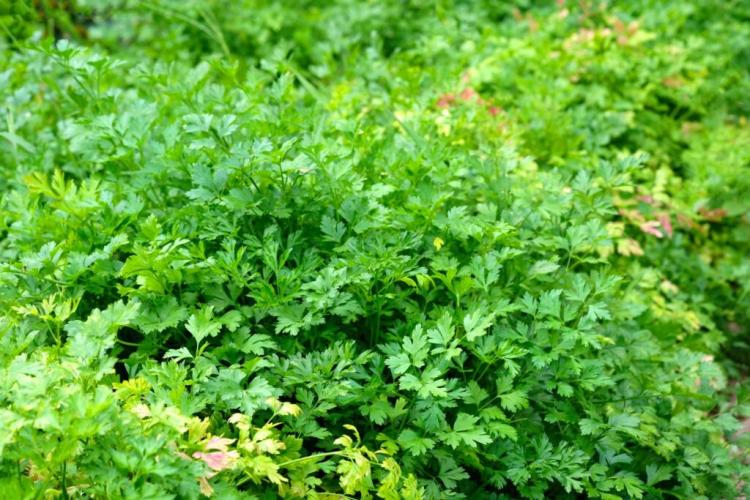
Parsley doesn’t grow: you can do that
If the parsley does not grow, it could be for many reasons.
- If the parsley is too shady or too sunny or on unsuitable soil, it is worth transplanting. You can read more about the location in the article Growing parsley.
- On depleted soils, parsley hardly grows without nutrients. Measures to improve the soil help here.
- If a nutrient deficiency could be the reason, quick-acting fertilization with organic liquid fertilizer is the best solution.
- If there is waterlogging in the pot, a drainage layer with good water drainage can help.
- Pests and diseases in the bed can of course be combated with good neighbors and balanced mixed culture.
Hibernate parsley
Hibernating adult plants is not a problem because the parsley is hardy. No winter protection is required, but neither does it form fresh leaves in the cold season. If the plants are in the pot or if parsley is overwintered on the balcony, it is best to choose a frost-free location and protect the pots and plants in severe frost. With smaller pots with little soil in them, however, there is a high risk that the plant and its substrate will freeze through.
Even the hardy parsley cannot cope with that. Such small parsley pots are best left for the winter in the house, cool and bright on the windowsill of an unheated room. If you don’t want to do without fresh parsley when cooking in winter, you can cultivate it in a pot on a light, warm window sill.
By the way: parsley is considered annual, but it can continue to be harvested until flowering in the second year and the emergence of the next generation.
Maintaining parsley in the pot: special features
Care is also important for parsley in the pot. Repotting is important when buying a pot of parsley plants or sowing them yourself. Here the planter is often too small to provide enough soil for the kitchen herbs until they bloom next year. A well-rooted ball of the earth should therefore move to a larger container. To do this, fill the prepared pot about a third with pre-fertilized soil.
You might so like: Growing Marjoram: At Home In The Garden And Balcony
The high proportion of compost stores water and at the same time provides a loose, permeable structure from which your parsley benefits. In addition, add some mainly organic slow-release fertilizer, loosen the parsley root ball from the old pot and place it in the new container. Fill this up with soil and press everything lightly on. Immediately after repotting, you should water the parsley and place it in a light, but not full sun.
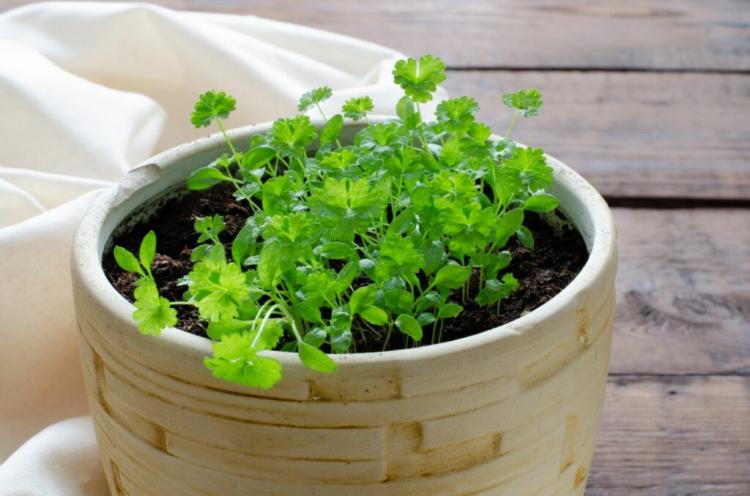
Tip: Parsley is usually only cultivated as a culinary herb for one year, as it forms flowers in the course of the 2nd year of standing. If you buy or sow new parsley in the following year, you should avoid spicing up the old parsley soil with a little fertilizer and reusing it. Because the parsley is highly intolerant of itself – and also of other Umbelliferae, such as the carrot. So it would hardly grow and become ailing in the pre-polluted earth.
There is also a large selection of different varieties of parsley. We introduce you to the best parsley varieties for growing in pots and beds.
